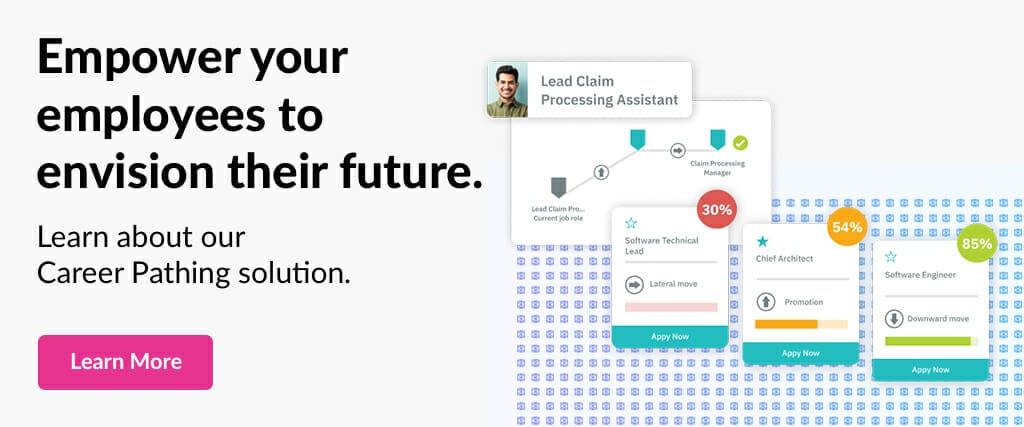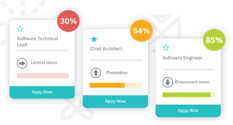Drivers Of Employee Engagement

If you’re a leader in your organization, you’re probably already aware that employee engagement is important. It’s long been recognized that happier employees are more productive in their jobs, and they tend to stick around longer, which saves your company money in terms of recruiting and training costs. With that said, many leaders don’t understand exactly what employee engagement truly is or how to achieve it within their own organizations.
Every person is different, so the elements that cause them to be engaged will differ, too. According to study by Gallup, employee engagement focuses on helping workers feel invested and purposeful in the jobs they’re performing. They want to be known for the factors that make them unique contributors to their teams (and their organizations as a whole). Each of the following drivers of employee engagement will impact workers differently; in the end, if you want to bolster your employee engagement strategies, you should aim to hit as many of these as possible.
Autonomy
Autonomy inspires employees to do their best work. It’s the antithesis of micromanaging—giving employees the freedom and trust to do their jobs as they see fit. When people are given the opportunity to use their time and expertise in ways that make the most sense for their roles, employees are often more invested in their positions and their companies’ missions.
Capacity
How comfortable do your employees feel about being able to actually get the work done that they’re assigned to do? They need to feel capable (physically, emotionally, and intellectually) to complete their tasks. If they don’t have the resources necessary to do their best, they’ll quickly become disengaged.
Coworker Relationships
It’s important for team members to have mutual respect for each other. Great coworker relationships can result in increased trust and improved collaboration.
Fairness
People see how others are treated within their organizations and will react accordingly if they see unfair treatment being handed out. It’s vital to set clear expectations and have consistent processes and rewards because coworkers are constantly comparing their treatment to those of their colleagues.
Goal Support
Is your team set up with all the tools necessary to reach its goals? Do they know what important milestones need to be hit and what to do if they face bottlenecks in the process? Goal support is an essential driver of employee engagement and can help you easily measure workers’ strengths, opportunities, and successes.
Leader Availability
The more approachable, visible, accessible, and readily available leadership is, the more engaged and connected employees are likely to feel. This is one of the top drivers of employee engagement that’s often overlooked by busy executives who forget that they’re part of the team, too.
There are many benefits of employee engagement, including reduced turnover, lower absenteeism, and overall happier employees. It all begins with setting up a structure that facilities employee satisfaction and sticking to your plan.
How to Measure Employee Engagement
Understanding the importance of having happy, healthy team members is a lot different than learning how to measure employee engagement. There are various components of employee engagement models that should be weighed when you’re determining which from which metrics you should evaluate your staff. The Gallup employee engagement model consists of four levels:
Growth. In the last year, have your employees had the opportunity to learn and grow? In the last six months, have you spoken with your employees about their progress?
Belonging. Do your employees feel like they have friends they can relate to at work? Are their coworkers committed to doing quality work? Do individuals’ roles make them feel important? Do team members’ opinions count?
Individual contributions. Is there someone in your workplace who encourages individuals’ development? Do supervisors treat their employees as though they care about them as people? Are team members recognized or praised for doing good work?
Basic needs. Do employees know what’s expected of them at work, and do they have the materials and equipment necessary to complete their tasks?
If you look through employee engagement articles, you’ll see a recurring theme: people want to be valued for the work they’re performing. Of course, you won’t know if you’re hitting this mark unless you’re measuring employee engagement on an ongoing, consistent basis. To do so, you should be evaluating the principal definitions of employee engagement at least annually, but ideally, much more often.
1. Determine Engagement Outcomes
Engagement outcomes are survey questions that represent the behaviors or feelings of truly engaged workers. They usually measure perceptions of organizational price, people’s intent to stay, and their willingness to advocate on behalf of the brand. Outcomes help reveal the current state of employee engagement within companies’ walls.
2. Identify What’s Important to Your Employees
Engagement surveys should include a range of drivers, including those mentioned above, so you can get a feel for what’s most important to your population. You should be asking employees to rate the importance of factors such as:
- Teamwork
- Trust (in both leadership and peers)
- Career development
- Communication and change management
- Confidence in the future
- Pay
- Value and recognition
There should also be a section where employees can leave comments to enlighten you about factors you might not have considered. This, alone, will help your employees feel heard.
3. Perform a Drivers Analysis
Once you’re armed with survey data, you can complete a drivers analysis, which will help you identify which engagement drivers have the biggest impact on your company. Your best strategy is to understand what’s driving people to be engaged so you can implement programs that bolster initiatives around those elements.
4. Develop a Continuous Listening Strategy
An annual survey is a bare minimum. Remember, preferences and outlooks change over time. Use pulse surveys to dive deeper into survey results or gather real-time feedback when the opportunity presents itself. Also, add lifecycle surveys so you can get feedback from people when they hit key moments within your organization.
Barriers to Employee Engagement
Although employee engagement is clearly necessary at organizations, there can still be barriers to achieving the desired results. These can come from various sources, including management. Some common barriers to employee engagement include:
Lack of Clarity
If you don’t know what engages your employees, you can’t fix the problems associated with disengagement. Engaged employees are happy with their jobs, motivated to do their best, and are satisfied with the work they do.
You need to survey your employees regularly and touch base via open-communication systems so you can get the pulse of your people.
Cynicism
Cynical, negative views about what the organization is doing can spread like wildfire. People who question engagement often see it as a fad that’s intended to get people to work harder for less money, security, and praise.
To combat cynicism, be transparent in your efforts and follow through with your plans. Eventually, people will see the empire of engagement you’re trying to build.
Bureaucracy
When there are too many rules and procedures to follow, people see that your organization favors control over the results of its efforts. If this is the case in your organization, look for ways to incorporate employees into the decision-making process when it comes to employee engagement so they feel seen and heard.
Learn more about employee engagement
Implementing Career Path Initiatives
Implementing career path initiatives has become a top priority for organizations seeking to retain and develop talent. These initiatives help companies provide clear growth pathways for employees, which, in turn, boosts engagement and reduces turnover. However, the success of such programs relies heavily on having accurate, structured data on skills and jobs. Unfortunately, many organizations […]
Career Development Promises to Unlock Engagement
Career development holds immense promise for motivating and retaining talent. However, too often, it falls short of expectations for both new hires and long-standing employees, costing companies substantial sums in turnover, engagement, and lost productivity. In fact, according to the latest CIPD Employee Outlook survey, one in three employees feel their career progression has not […]
Personalized and Targeted Career Growth
The traditional one-size-fits-all approach to talent management no longer suffices. Organizations must recognize and adapt to the individual needs of their employees, empowering them to take charge of their career paths. TalentGuard is at the forefront of this transformative wave with personalized and targeted career growth. Our self-serve talent solution is designed to help employees […]




